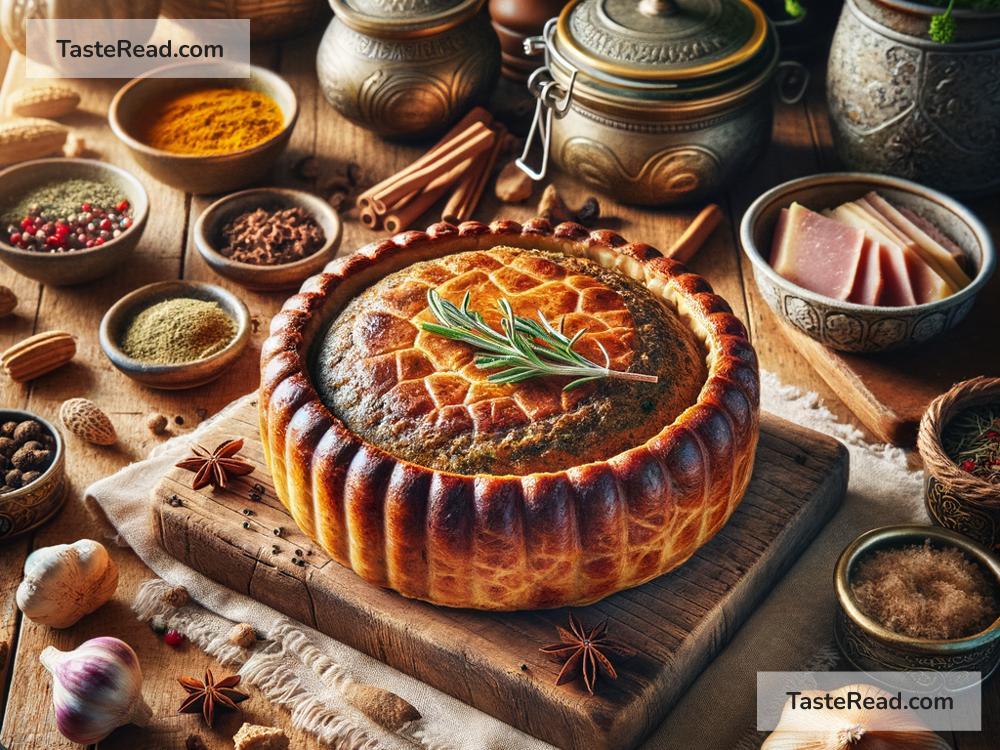The Development of French Pâté: A Taste of History
French cuisine is famous all over the world for its rich flavors, careful preparation, and centuries-old traditions. One dish that truly represents French culinary artistry is pâté. It is a delicious mixture of cooked meat or fish, blended with fats, seasonings, and sometimes vegetables. While pâté is enjoyed globally today, its development in French history is a fascinating journey worth exploring.
The Origins of Pâté
The word “pâté” comes from the Old French term “paste,” which referred to a mixture or paste of ingredients. Early forms of pâté can be traced back to ancient civilizations, like the Romans and Greeks, who made similar dishes involving meat spreads. However, the modern concept of pâté as we know it truly took shape in medieval France.
During the Middle Ages, French pastry chefs became skilled in combining meats with other ingredients and encasing them in pastry dough or molds. Food preservation was a major concern at the time since refrigeration did not exist. Transforming meat into pâté helped keep it fresh for longer. It also allowed chefs to use every part of the animal, a practical solution in times of scarcity. It wasn’t just about avoiding waste; it was about turning basic ingredients into something delicious and luxurious.
Pâté Goes Royal
In the 17th century, pâté underwent a transformation as French cooking started taking on more artistic forms. Under the reign of King Louis XIV, French cuisine was elevated to a high social status. The royal court of Versailles relied on grand feasts to display wealth and cultural sophistication. Pâté became a centerpiece of the lavish banquets. Cooks created intricate molds, decorated pâtés with designs, and started experimenting with flavors to appeal to royalty.
It was during this period that foie gras pâté gained popularity. Foie gras is made from duck or goose liver that has been specially prepared to give a rich, buttery texture. Although the technique of preparing foie gras existed since ancient Egypt, French chefs gave it refined flavors by turning it into pâté. To this day, foie gras pâté is considered one of the most luxurious delicacies in France and is often associated with fine dining.
Regional Variations
France is known for its diverse culinary landscape, and pâté is no exception. Different regions began developing their own versions of pâté, using local ingredients and methods.
For example, in Normandy, pâté often includes apples, which are abundant in the region. In Alsace, near the German border, chefs incorporated local spices and meats, creating hearty, rustic pâtés. Burgundy, famous for its wines, has pâtés enriched with wine, giving them a deeper flavor. These regional variations helped make pâté incredibly versatile—not only could it be enjoyed as a fancy dish in high-end restaurants, but it could also serve as a hearty meal in local homes.
One of the most famous versions of pâté is pâté en croûte, which means “pâté in a crust.” In this style, the meat paste is encased in golden pastry dough, making it both stunning to look at and delicious to eat. By incorporating the surrounding region’s ingredients and techniques, each version of pâté became a snapshot of local culture and heritage.
Pâté Goes Global
By the 19th century, pâté had become widely popular not only across France but also in other parts of Europe. French colonization and trade allowed this unique dish to spread further. Today, pâté is enjoyed in countless forms around the world. While France still holds the crown for perfecting pâté, other cuisines have borrowed and adapted it over time.
In modern times, pâté can be found at grocery stores, bakeries, and high-end restaurants alike. Chefs continue to experiment with ingredients, incorporating new ideas like vegetarian pâtés made from mushrooms, lentils, or beans. French pâté even inspired similar creations in places like Vietnam, where pâté is an essential ingredient in bánh mì, the famous Vietnamese sandwich.
How Pâté Is Served
French pâté is often served as an appetizer or incorporated into charcuterie boards alongside bread, crackers, pickles, and cheeses. Its smooth texture and bold flavors make it easy to pair with wine, particularly red wines such as Pinot Noir or Bordeaux. For more rustic versions, you can enjoy pâté with crusty bread and simple salads.
In traditional French households, pâté might be served as a snack or even as part of a picnic. This accessibility contributes to its enduring popularity—it can be dressed up for elegant gatherings or enjoyed casually on any given day.
Pâté Today
Despite its rich history, pâté continues to evolve. Chefs now use innovative techniques to bring bold new flavors and textures to this classic dish. Vegan pâtés are becoming popular for those who want the experience of pâté without using meat. With modern technology, pâté can be made faster and with less effort than ever before. Yet, its roots in French culture remain strong, and pâté continues to represent the art of transforming simple ingredients into something extraordinary.
Pâté is more than just a dish—it’s a reflection of history, creativity, and the French passion for food. Whether served at a royal feast or a casual picnic, pâté remains a timeless favorite that connects people to the traditions of the past. And while it has spread across borders and gained global fame, it will always carry the unmistakable stamp of French culinary excellence.


